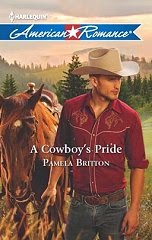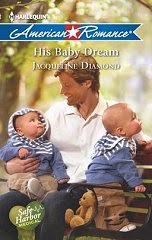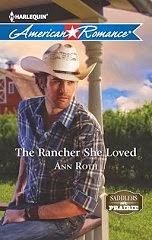Michele Dunaway says: Thanks to Ann Roth for securing the following interview from Debbie and for yesterday agreeing to host Barbara Bretton in her blog spot. Thanks Ann. You're tops.Here we go!Author: Debbie Macomber
Website: http://www.debbiemacomber.com/Bio: Debbie Macomber, the author of BACK ON BLOSSOM STREET, SUSANNAH’S GARDEN, A GOOD YARN, THE SHOP ON BLOSSOM STREET, BETWEEN FRIENDS and the Cedar Cove series, is one of today’s leading voices in women’s fiction. A regular on every major bestseller list with more than 100 million copies of her books in print, the award-winning author celebrated a new career milestone in September 2007, when the latest in her Cedar Cove series, 74 SEASIDE AVENUE, scored #1 on the NEW YORK TIMES, USA TODAY, Publishers Weekly and Bookscan bestseller lists. Her popularity is worldwide with her books translated into twenty-three languages.
Debbie loves to tell the story of her struggle to get published, and the five-year search to find a publisher who would buy one of her manuscripts. Dyslexic and the mother of four young children, she wrote those early books in her kitchen on a rented typewriter. But her hard work and determination paid off. Her first manuscript, HEARTSONG, acquired by Silhouette Books in 1982, became the first category romance ever to be reviewed by the Publishers Weekly. She was soon featured in Newsweek—and demand for her books quickly exceeded her wildest dreams.
Debbie is best known for her ability to create compelling characters and bring their stories to life in her books. Drawing on her own experiences and those of her family and friends, she demonstrates an almost uncanny ability to see into the souls of women and to express their emotions, values and concerns. In every book her sense of humor enlivens her writing.
An avid knitter, Debbie has parlayed her passion for the craft into garments for her grandchildren and bestselling books about women who knit. In her May 2007 hardcover, BACK ON BLOSSOM STREET, which debuted in the #8 slot on the NEW YORK TIMES bestseller list, Debbie welcomed back some familiar faces and introduced her readers to delightful new characters in the Seattle neighborhood introduced in THE SHOP ON BLOSSOM STREET. There, the author continued her moving exploration of complex relationships and the special bonds formed by a group of diverse women who meet in knitting classes and face the challenges in their lives. The next book in the series, TWENTY WISHES, will be published in May 2008.
In 2005 Debbie’s dedication to the writing craft—and to her loyal readers—brought her the first-ever “people’s choice” Quill Award for Romance for 44 CRANBERRY POINT, the fourth book in her highly popular Cedar Cove series.
The author is delighted that her readers respond personally to her books. She maintains a 75,000-name (and growing) list derived from personal correspondence from her fans, those who have come to her book signings held in bookstores across the country and those who have signed her guestbook at
http://www.debbiemacomber.com/.
A typical day in the life of Debbie Macomber begins long before the sun comes up. Rising at 4 a.m., she uses those early hours as a time to reflect, write in her journal, read inspirational materials and organize her schedule. At 6 a.m. she swims half a mile in a local Olympic-size pool. By 7:30 a.m. she’s already at work in her office, devoting her day to her true calling: writing novels. Readers around the world clamor for her heartwarming books about small-town life, home and family, women who knit, enduring friendship and even stories of humorous angels with earthly missions.
In 2008, Leisure Arts, the company that publishes “Knit Along with Debbie” pattern booklets, will introduce Debbie’s line of knitting notions. All Debbie’s proceeds from the sale of the products will go to knitting charities and World Vision.
When Debbie takes a break from her writing, knitting and charity work, she likes to throw herself into research for upcoming novels. She’s willing to try anything and go anywhere. In fact, she overcame her natural sense of caution to take kayaking lessons so that one of her heroines could benefit from the experience. Recently, she threw out the first pitch in a Seattle Mariners game at Safeco Field.
Debbie and her husband, Wayne, are the proud parents of four children and grandparents of nine grandchildren. They live in Washington State and winter in Florida.
Q & A:WHAT WAS YOUR VERY FIRST BOOK AND FOR WHAT LINE?My first published book was Starlight (Silhouette Special Edition, #128) in November, 1983. My first Harlequin title was The Matchmakers, published in 1986. It’s being reissued in March of next year.
WHO WROTE SERIES ROMANCE IN THE EARLY YEARS OF YOUR CAREER? WHAT DID YOU FIND MOST CHALLENGING AND MOST REWARDING WRITING FOR A HARLEQUIN LINE?Janet Dailey was writing then, and I loved her books. I also liked a number of the British (and Australian authors), like Anne Mather, Margaret Way, Violet Winspear, Charlotte Lamb. I wanted my books to be as engaging and heartwarming as theirs. The most challenging aspect was trying to break into Harlequin and Silhouette lines when they already had so many talented writers. The most rewarding was when I did!
WHAT DID YOU ENJOY MOST ABOUT WRITING THE WYOMING KID FOR THE AMERICAN LINE?Writing The Wyoming Kid (HAR 1121) was a nice break from the lengthy women’s fiction novel I’d been working on prior to that. I enjoyed returning to the characters I’d first introduced in a Special Edition, Denim and Diamonds, years before. Readers had asked for the heroine’s brother’s story, and I decided this was the opportunity to tell it. I particularly enjoyed the character of Lonny Ellison and the banter between him and the heroine, Joy. And I liked the emphasis on place—in this story, the ranching community of Red Springs, Wyoming—which I know is a hallmark of American Romance .
HOW WAS THE HARLEQUIN AMERICAN LINE DIFFERENT FROM OTHER LINES OR YOUR OTHER BOOKS?Frankly, it wasn’t that different from other series books I’ve written, in that I was able to include a comedic element as well as a dramatic one. Obviously, given the shorter word length compared to my MIRA titles, The Wyoming Kid was a less complex story but it’s one that really appealed to me.
DESCRIBE A MOMENT YOU REMEMBER RELATED TO A HARLEQUIN OR SILHOUETTE ROMANCE LINE.One letter I received from a reader years ago said, “I’ll buy anything that has your name on it, so thank you, Betty, for writing such wonderful books.” I realized the reader had confused me with Betty Neels, but I wasn’t disturbed by the mistake and, in fact, considered it a compliment.
WHAT ROMANCE HERO ARCHETYPE IS YOUR FAVORITE?Gee, I don’t really know. I create the hero who best fits the story. Plot and character are, of course, interdependent. Lonny, the former rodeo cowboy known as the Wyoming Kid, was the right hero for that story and that heroine (and she was equally right for him). I would by no means describe him as an “alpha male,” but he’s a competent and confident man—until he falls in love!
DESCRIBE DEBBIE MACOMBER’S TYPICAL WORK DAYWell, this is my life when I’m writing and trying to meet deadlines, not when I’m traveling or on tour.
4 a.m. Up and out of bed
4-5:30 Bible reading, devotional and journal time
5:30-7 Swimming
7:30 Arrive at office
7:30-10 Read Guest Box entries, reader mail and blog
10-4 (Approximately) Work (If I’m writing a book, I always set myself a certain number of pages to complete each day. I stay at the office until I’m finished and then head home.)
5-9 (Approximately) Dinner, knitting, reading and then to bed
Hmm. Sounds rather boring now that I look at it.
WHAT’S NEXT FOR YOU?
I’m currently working on the 2009 Cedar Cove title, 92 Pacific Boulevard, and on the Cedar Cove Cookbook (and gaining weight just thinking about the recipes!). In the next month, I have trips planned to New York, California and Leavenworth (the one in Washington, not the prison town!).
ANYTHING ELSE YOU’D LIKE TO SAY TO THE READERS AND WRITERS READING THIS INTERVIEW?
To all the readers, I’d like to say that these books come from some of the best writers in the industry. In the years since its inception, Harlequin American has grown and changed—and attracted some very fine writers. To the writers, I’d like to say—keep up the good work. Happy Birthday, American Romance!

 The next year he was a pirate, complete with a cardboard sword and swashbuckling black eye patch. For safety’s sake, I didn’t want to completely obscure his vision in one eye, so the eye patch was just a piece of black felt attached to the bandana.
The next year he was a pirate, complete with a cardboard sword and swashbuckling black eye patch. For safety’s sake, I didn’t want to completely obscure his vision in one eye, so the eye patch was just a piece of black felt attached to the bandana.

 Next up is an intergalactic princess, also affectionately known as our adorable little space cadet. I used a pattern for this one, and the fabric came from a ‘70s gold lame evening dress we’d scooped at a garage sale for a dollar. Anyone remember those dresses? Gack! Much better suited for space travel.
Next up is an intergalactic princess, also affectionately known as our adorable little space cadet. I used a pattern for this one, and the fabric came from a ‘70s gold lame evening dress we’d scooped at a garage sale for a dollar. Anyone remember those dresses? Gack! Much better suited for space travel.

 The last time I made a costume was two years ago. Meet Marilyn. The intergalactic princess might be all grown up, but that didn’t stop her from asking Mom to make a rendition of that oh-so-famous white dress. And Mom happens to think she’s every bit as gorgeous as the original wearer.
The last time I made a costume was two years ago. Meet Marilyn. The intergalactic princess might be all grown up, but that didn’t stop her from asking Mom to make a rendition of that oh-so-famous white dress. And Mom happens to think she’s every bit as gorgeous as the original wearer. And just for fun, this is our neighbors’ cat, Peter. No costume for Pete. He’s wearing his everyday tuxedo, tastefully accessorized with a pair of jack-o’-lanterns.
And just for fun, this is our neighbors’ cat, Peter. No costume for Pete. He’s wearing his everyday tuxedo, tastefully accessorized with a pair of jack-o’-lanterns.










